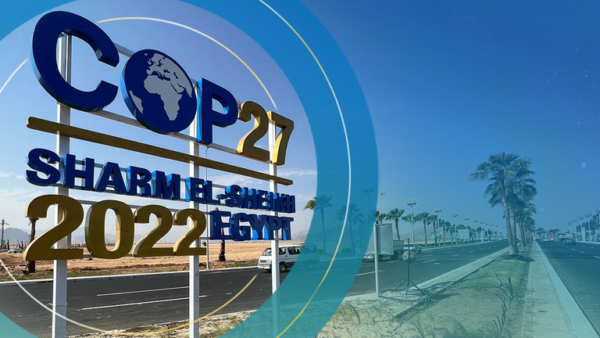While the once a year gatherings of the United Nations Conference of Parties (COP) are ruled through the presence of presidency delegations and weather activists, there’s a pointy upward push in participation through Indian commercial enterprise delegations in latest years, in step with analysts and long-time contributors at those meetings.
While the United Nations Framework Convention on Climate Change (UNFCCC), the umbrella frame below which the COPs are held, continues facts on participation through exceptional hobby businesses and their countrywide affiliations, it doesn’t, however, mainly damage them down through agencies or environmental organisations. About 33,000 delegates have registered for COP27, making it probably the second-biggest in COP history. India’s delegation size, which represents authorities representatives, is 70.
Mahendra Singhi, the handling director and CEO, Dalmia Cement, instructed The Hindu that there have been “12-15 agencies” at the continued COP and this became a constant growth from preceding COPs. “The possibility to learn, be a part of panels, and gift the stairs we’ve taken as a country, enterprise and organization to conform to more moderen practices to almost 40,000 contributors [who attend the two weeks of the conference] may be very valuable,” he stated, in a phone communique from Sharm el-Sheikh. “Going ahead, we’re in talks with the Confederation of Indian Industry (CII) to growth Indian participation.”
The twenty first COP in Paris in 2015, which resulted withinside the Paris Agreement, became a turning factor that piqued participation, say experts. The Paris Agreement noticed all international locations unilaterally receive that the globe couldn’t be allowed to heat past 2 ranges Centigrade through the give up of the century, and as a ways as possible, this must be restrained to 1.five ranges Centigrade. This made it vital that India too, which because the 0.33 biggest internet emitter, big and developing country, and nevertheless majorly reliant on coal for strength, to devote extra considerably to a destiny hinged on renewable strength. This became underlined maximum vividly in November 2021, while Prime Minister Narendra Modi, made the dedication that India might be “internet 0” or carbon impartial through 2070 — an extended manner off however nevertheless a concrete deadline.
“Net 0 is a huge shift however even some years earlier than that, authorities coverage has been visibly converting its stance from the conventional position [of not being significantly responsible for historical CO2 levels], which include selling sun strength. Private area can see this very visibly, they have got their cash at the table. Till 2015, they felt they might forget about it however now the worldwide rhetoric is converting and now they see they should adapt,” Vaibhav Chaturvedi, who has attended a couple of COP meetings and leads weather and strength coverage at the general public coverage assume tank Council for Energy, Environment and Water, stated.
Policies in Europe, which include plans to not manufacture fossil gasoline motors or a carbon border adjustment tax (wherein responsibilities can be imposed on imported items primarily based totally at the carbon expended in generating them) have been signs of a converting marketplace and will hit Indian exporters. Domestically, too, aside from committing to provide 1/2 of its power from non-fossil gasoline reassets through 2030, India had additionally brought a carbon marketplace, in which primary polluters will voluntarily reduce down or buy carbon credit to fulfill sure pollution-discount targets. “Many commercial enterprise men and women come to COP and lots of are leader sustainability officials who’re coming to observe, apprehend worldwide commercial enterprise exercise, and the positions in their very own governments. While agencies do have an impact on coverage thru lobbying — and this isn’t particular to India —there’s no real lobbying at COP,” Mr. Chaturvedi added.
“There are 3 businesses of businesspersons who go to COP: the ones withinside the renewable strength commercial enterprise; industrialists very depending on the fossil gasoline, which include metal and cement manufacturing; and people inquisitive about the ‘optics’, which include conglomerates who now no longer handiest need to be visible as devoted to easy strength however also are eyeing capacity agreements with worldwide corporations to snag new technologies,” Sambitosh Mohapatra, additionally a player in numerous COPs who leads the surroundings and sustainability exercise at PricewaterhouseCoopers India, stated.
Within India, too, home coverage measures this kind of obligatory requirement through the Securities and Exchange Board of India (SEBI) that the pinnacle 1,000 indexed corporations claim tasks they have got taken to enhance the surroundings and company governance, acted as a nudge to different corporations to acquaint themselves with worldwide exercise. “Increasingly, once I have interaction with corporates, I feel that lots of them sense their emblem cost and recognition can be impacted in the event that they aren’t compliant, or licence to perform in sure international locations, and their capacity to elevate cash may want to suffer,” Mr. Mohapatra stated. “There are an increasing number of needs from senior residents to banks or fund managers to make investments handiest in environmentally accountable corporations.”
Brajesh Singh, president of Arthur D. Little, a consultancy, stated that in conjunction with corporations, even person states have been sending delegations to the COP. Uttar Pradesh has despatched a delegation to Egypt this 12 months to show off its inexperienced tasks.


